Lychee Profile
Written by Joy
Nov 06 2020
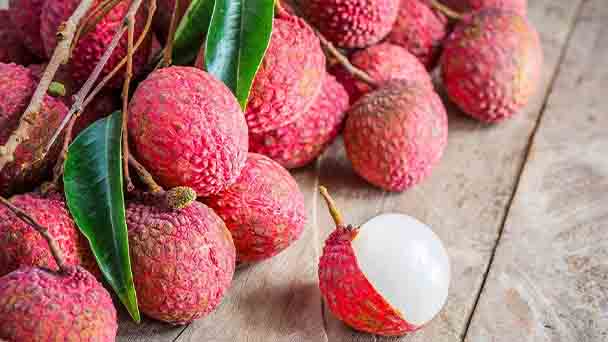
Lychee is an evergreen tree in the Sapindus family and is about 10 meters high. The peel has scaly bumps, bright red and purple. To bright red when mature. The seeds of Lychee are all wrapped in fleshy arils. Flowering in spring, fruiting in summer. When the pulp is fresh, it is translucent and creamy, delicious, but not resistant to storage.
Lychee morphological characteristicsLychee growth habit and growing environment and distributionLychee efficacy and roleEdible value of LycheeHow to eat LycheeContraindicationsLychee cultivationSoilSoil management under the tree canopyFertilizeWateringWeedingPrune
Distributed in the southwest, south and southeast of China, Guangdong and southern Fujian is the most cultivated. Lychee is also cultivated in Southeast Asia, and introduced in Africa, America and Oceania.Lychee is sweet, sour, and warm. Lychee enters the heart, spleen and liver channels; it can stop hiccups and diarrhea. It is good food therapy for intractable hiccups and diarrhea. It also has brain fitness, appetizer and spleen, and promotes appetite The effect. Eat more lychees and get angry. Lychee wood is solid, elegant in texture, and resistant to corrosion. It has always been a top-grade material.
Lychee morphological characteristics
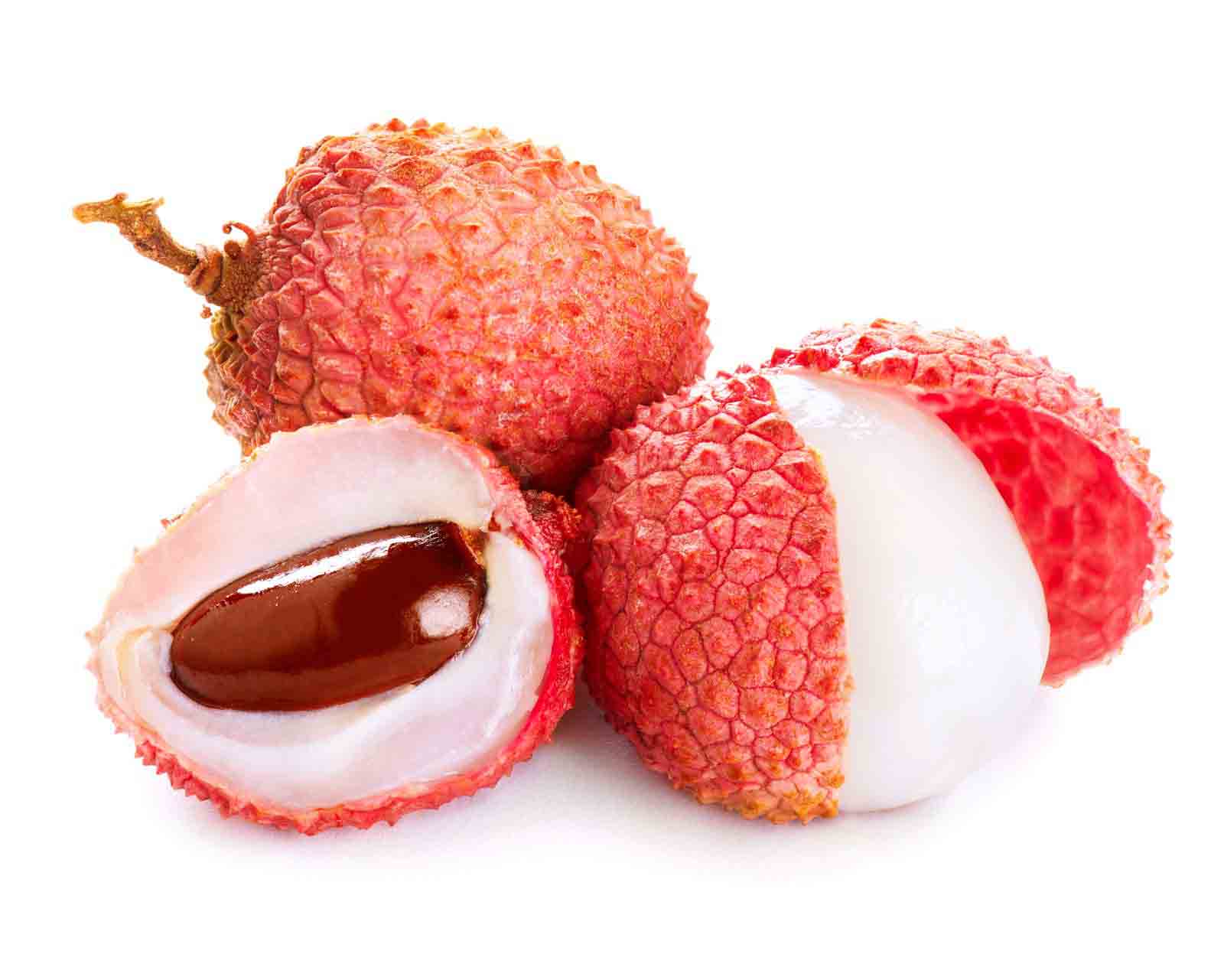
The petiole is 10-25 cm or longer. The leaflets of Lychee have 2 or 3 pairs, less than 4 pairs, thin leathery or leathery, lanceolate or ovate-lanceolate, sometimes oblong-lanceolate, 6-15 cm long and 2-4 cm wide, The apex is sharply pointed or caudally short and acuminate, entire, ventral dark green, shiny, powder green on the back, hairless on both sides; lateral veins are often slender, not very obvious on the ventral surface, obvious or slightly convex on the back; petiole long 7-8 mm.
The inflorescence of Lychee is terminal, broad and multi-branched; the pedicel is slender, 2-4 mm long, sometimes thick and short; the calyx is covered with golden yellow short hairs; the stamens are 6-7, sometimes 8, the filaments are about 4 mm; the ovary is dense Cover small tumors and bristles.
The fruit of Lychee is ovoid to nearly spherical, 2-3.5 cm long, usually dark red to bright red when mature; the seeds are all wrapped in fleshy arils. The flowering period of Lychee is in spring, and the fruiting period is in summer.
Lychee growth habit and growing environment and distribution
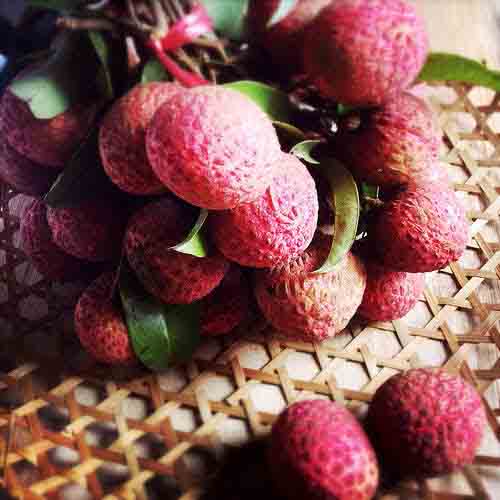
Lychee in China is mainly distributed in the range of 18-29 degrees north latitude. Guangdong is most cultivated, followed by Fujian and Guangxi. There are also a small amount of cultivation in Sichuan, Yunnan, Guizhou and Taiwan. It is also cultivated in Southeast Asia, and introduced in Africa, America and Oceania.
Lychee efficacy and role
Edible value of Lychee

How to eat Lychee
Before and after eating lychees, drink some saltwater, herbal tea or mung bean soup, or peel fresh lychees and soak them in light saltwater, put them in the freezer before eating. This not only prevents virtual fire but also has the effect of waking up the spleen and eliminating stagnation. In addition, decoction with lychee shells can relieve lychee fever. Generally, adults should not eat more than 300 grams of lychees a day, and children should not exceed 5 lychees at a time. Do not eat lychees on an empty stomach, it is best to eat them half an hour after a meal. Those who have hypoglycemia caused by eating lychee should supplement with sugar water in an appropriate amount, and those with severe symptoms should be sent to the hospital for treatment in time.Contraindications
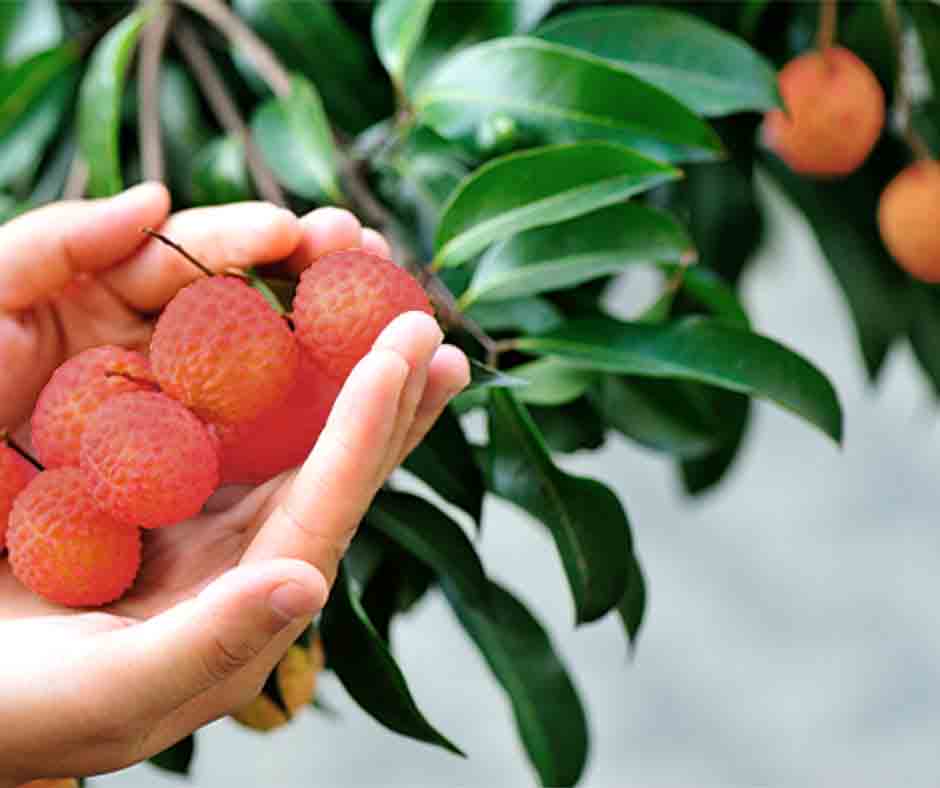
⒉ It is not advisable to eat a lot of Lychees;
⒊ Diabetic people eat carefully;
⒋ Try not to eat lychees in blisters.
The economic value of Lychee trees
The wood is solid, dark reddish-brown, with elegant texture and corrosion resistance. It has always been a top-grade material. Guangdong lists wild or semi-wild (both seed-propagated) lychee wood as special-grade wood and cultivated lychee wood as first-grade wood, mainly used for shipbuilding, beams, pillars, and high-end furniture.
Lychee cultivation
Soil
Most lychees are planted in hills and slopes. These soils usually contain less organic matter, have shallow soil layers, and have poor water and fertilizer retention capacity. If you do not pay attention to soil management, the growth and development of lychees will be seriously affected.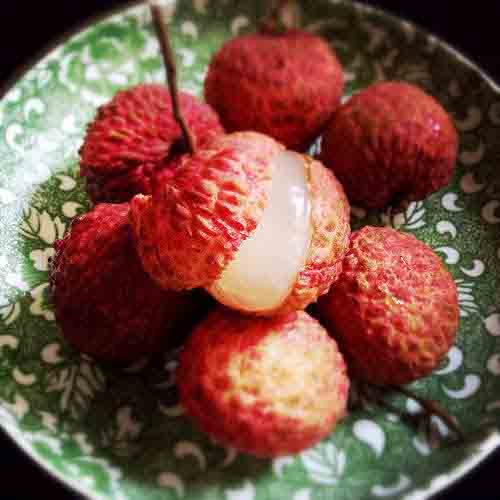
Soil management under the tree canopy
Young Lychee trees have fewer roots, weak growth, and have mycorrhizas symbiosis with certain fungi. The growth of mycorrhiza requires a relatively aerated soil environment. Therefore, the soil around the trunk under the canopy of Lychee must be fertile and loose, rich in organic matter.It is conducive to the formation of mycorrhiza and the rapid development of the root system. Therefore, the soil under the tree canopy should be loosened in time, and more organic fertilizer should be applied to cover the ground to prevent compaction.
Fertilize
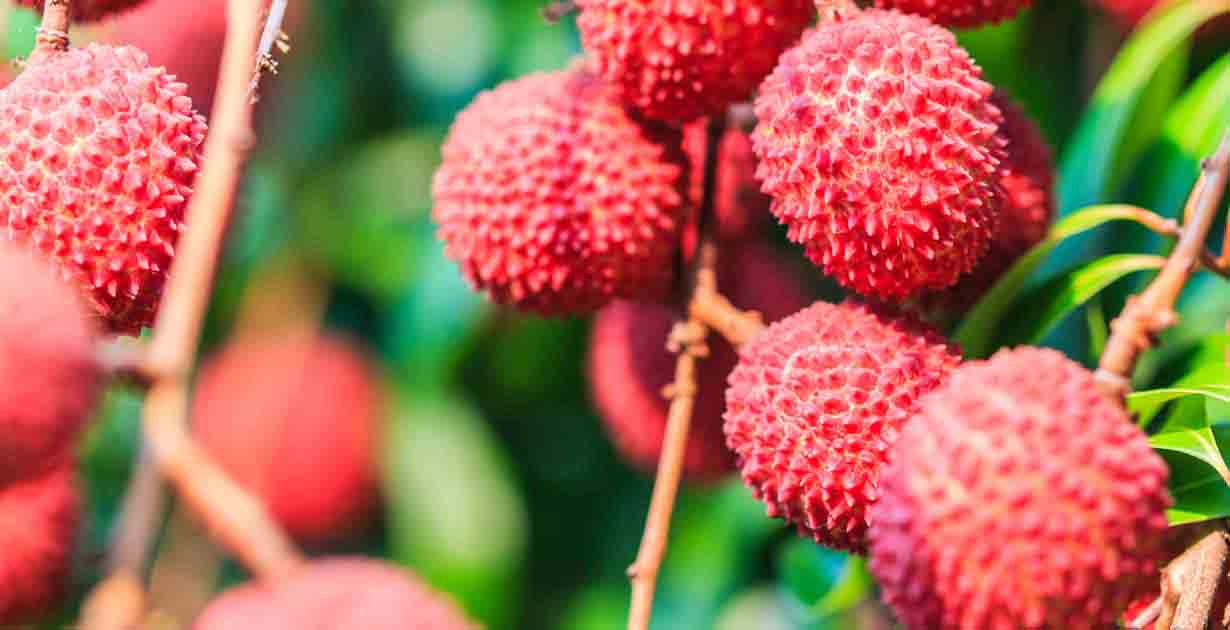
Fertilizer and water management of 1-2-year-old saplings after planting can promote root mass and total leaf area of branches. The lychee saplings that have survived after planting have few and weak root systems and weak absorption capacity, so it is not suitable for large water. Fertilization is based on the principles of maturity and high-quality, nitrogen-based fertilizers combined with a small amount of phosphorus and potassium fertilizers, small but refined, and diligent and thin application. The saplings of the year of planting can be applied with thin fertilizer 1-2 times a month. In the second and third year, increase root mass, promote shoots and strengthen shoots. Apply a nitrogen-based quick-acting fertilizer every time the shoots of the shoots sprout to promote the rapid growth of new shoots; when the leaves turn from red to green, apply a second fertilizer to prompt the shoots to quickly turn green, improve photosynthetic efficiency, and accumulate nutrients. Fertilizer can also be applied again after the new shoots turn green to accelerate the maturity of the new shoots and shorten the shooting period.
Watering
Moisture is an important part of the Lychee tree. Young lychee trees have few and shallow roots and are greatly affected by changes in surface soil moisture. In the dry soil and dry atmosphere, attention should be paid to watering and moisturizing. In the rainy season, prevent water accumulation in the planting hole, and the sinking plant should be raised appropriately to facilitate normal growth.Weeding
Lychee mycorrhiza is aerated, weeding and loosening the soil help loosen the soil and promote the development of the root system. Young trees can be weeded and loosened with the management of intercrops. Summer and autumn are hot and rainy, weeds grow fast, and the soil is easy to compact. The frequency of weeding and loosening should be more; in winter and spring, the temperature is low, drought, weeds grow slowly, and the frequency of weeding and loosening is less.The roots of young trees are shallow, so the loose soil should be shallow according to the range, 8-10 cm is appropriate, and it can be as deep as 15 cm outside the rhizosphere.
Prune

In the past, young lychee trees were rarely pruned, so the crown was messy, the branches were too thin, the pests were serious, and the vigor was weak. Pruning should be carried out once a year in winter to cut off over-dense shady branches, cross branches, overlapping branches, diseased and insect branches, weak branches, and dead branches, so that nutrients can be effectively used to expand the canopy and make the canopy ventilated and light. , Reduce pests and diseases. Every time a new shoot matures and before the next new shoot germinates, the long and upright shoots that have grown vigorously should be cut by 20-30 cm.
The pruning of young trees should pay attention to the balance of the crown.
Latest Updated
- Benefits of Bugleweed - 7 Science-backed Health Benefits
- Bugleweed Dangers & Side Effects - Is It Poisonous?
- How to Plant Evergreen Trees - What You Should Know
- When to Plant Evergreens - Grow Guide for Evergreen Trees
- 12 Wonderful Evergreen Shrubs for Your Garden
- 12 Popular Evergreen Plants with Pictures for Beginners
- When And How To Prune A Lilac Bush Like a Pro
- How to Grow & Care for Lilac Vine (Hardenbergia Violacea)
- Japanese Lilac Tree (Syringa Reticulata) Care & Propagation Guide
- Shumard Oak Pros and Cons - What to Know
Popular Articles
- Winter maintenance of Antirrhinum Majus
- How to Grow Terminalia Mantaly Tree
- How to Grow and Care for Crossostephium Chinense
- How to grow Antirrhinum Majus in spring
- Peristeria Elata (Dove Orchid) Profile: Info & Care Guide
- Underwatered Snake Plant (Sansevieria Trifasciata) - Signs And How To Fix
- How to Care for Brazilian Jasmine Plant (Mandevilla Sanderi)
- How to Grow & Care for Graptopetalum Purple Delight in Summer
- Rosa Chinensis (China Rose): Plant Growing & Care Tips
- How to Care for Baby Sun Rose (Aptenia Cordifolia)